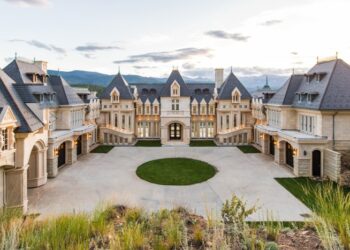Step into the world of mid century interior design, where sleek lines, vibrant colors, and timeless pieces converge to create a space that is both nostalgic and modern. This introductory passage invites you to delve into the essence of mid century design with a blend of historical significance and contemporary relevance, promising an enlightening exploration ahead.
As we journey through the key elements of mid century interior design, you'll uncover the unique charm and style that define this iconic era of design.
Overview of Mid Century Interior Design
Mid century interior design is a style that emerged in the mid-20th century, typically referring to the period between the 1940s and 1960s. It is characterized by clean lines, minimalistic forms, and a focus on functionality.
Historical Context and Influences
Mid century interior design was heavily influenced by the modernist movement, which emphasized simplicity, functionality, and the use of new materials such as steel, glass, and plywood. The aftermath of World War II also played a significant role in shaping this design style, as there was a need for practical and affordable housing solutions.
Designers like Charles and Ray Eames, Eero Saarinen, and Florence Knoll made significant contributions to the mid century aesthetic with their innovative furniture designs.
Significance in Modern Architecture and Interior Decorating
The mid century design aesthetic continues to be popular in modern architecture and interior decorating due to its timeless appeal and focus on quality craftsmanship. Its influence can be seen in contemporary furniture designs, with many pieces inspired by mid century classics.
The emphasis on open floor plans, large windows, and a seamless connection between indoor and outdoor spaces also reflects the enduring legacy of mid century interior design.
Furniture in Mid Century Interior Design
Mid century interior design is characterized by iconic furniture pieces that are both functional and stylish. The furniture of this era often features clean lines, organic shapes, and a mix of traditional and modern materials.
Iconic Mid Century Furniture Pieces
- Eames Lounge Chair and Ottoman: Designed by Charles and Ray Eames, this iconic chair combines leather and molded plywood for a sleek and comfortable look.
- Noguchi Coffee Table: Isamu Noguchi's sculptural coffee table features a glass top supported by curved wooden legs, exemplifying the fusion of art and functionality.
- Saarinen Tulip Chair: Designed by Eero Saarinen, this chair features a single pedestal base and a smooth, organic shape, adding a touch of modern elegance to any space.
Materials, Colors, and Shapes
Mid century furniture often incorporates materials such as wood, metal, and fiberglass, with a focus on natural finishes and textures. Colors are typically muted, with shades of brown, orange, and green being popular choices. The shapes of mid century furniture are sleek and minimalistic, with an emphasis on simplicity and functionality.
Comparison with Other Design Styles
Mid century furniture stands out from other design styles like traditional or contemporary in its unique blend of form and function. While traditional furniture tends to be ornate and heavy, mid century pieces are more streamlined and lightweight. Contemporary furniture, on the other hand, may feature bold colors and unconventional shapes, whereas mid century design favors simplicity and understated elegance.
Color Palette and Patterns
In mid century interior design, the color palette plays a crucial role in creating the iconic look that is both vibrant and sophisticated. The colors used are typically warm and earthy tones, with pops of bold and contrasting hues to add visual interest.
Color Palette
- Earthy tones such as olive green, mustard yellow, burnt orange, and warm browns are commonly used in mid century interiors.
- Contrasting colors like teal, turquoise, and bright reds are often incorporated to add a modern touch.
- Neutral shades like white, cream, and grey act as a canvas to balance out the bold colors and add a sense of airiness to the space.
Patterns and Textures
- Geometric patterns like hexagons, circles, and stripes are frequently seen in mid century decor, whether in wallpapers, textiles, or furniture.
- Abstract and organic shapes are also popular, adding a playful and artistic element to the design.
- Textured materials such as teak wood, leather, and brass are commonly used to create depth and visual interest in mid century interiors.
Creating a Cohesive Look
The key to achieving a cohesive mid century look lies in the strategic use of colors and patterns. For example, pairing a mustard yellow sofa with teal accent chairs can create a harmonious color scheme with a touch of contrast.
Adding in geometric patterned throw pillows or a rug can tie the look together and add visual interest. By carefully selecting and coordinating colors and patterns, a cohesive mid century aesthetic can be achieved effortlessly.
Architectural Elements in Mid Century Design
Mid century homes are characterized by specific architectural elements that contribute to their unique style and aesthetic. These elements often include clean lines, flat or sloping roofs, large windows, and open floor plans.
Emphasis on Open Floor Plans
Open floor plans are a key feature of mid century design, allowing for seamless flow between living spaces. This design concept promotes a sense of spaciousness and connection within the home, emphasizing simplicity and functionality.
Natural Light and Large Windows
Natural light plays a significant role in mid century interior design, with large windows strategically placed to maximize sunlight and blur the lines between indoor and outdoor spaces. This emphasis on natural light creates a bright and airy atmosphere within the home.
Indoor-Outdoor Living
Mid century homes often feature outdoor living spaces that seamlessly integrate with the interior, blurring the boundaries between inside and outside. Patios, decks, and courtyards are common elements that enhance the overall living experience and promote a connection to nature.
Overall Aesthetic Contribution
These architectural features in mid century design contribute to the overall aesthetic by creating a sense of harmony, simplicity, and openness. The clean lines, emphasis on natural light, and indoor-outdoor living spaces all work together to define the distinctive mid century style that remains popular and influential in interior design today.
Accessories and Decor
When it comes to mid century interior design, accessories and decor play a crucial role in adding character and personality to the space. These elements help tie the overall look together and create a cohesive design aesthetic.
Incorporating Mid Century Accessories into Modern Spaces
One tip for incorporating mid century accessories into modern spaces is to mix and match different elements. For example, you can pair a sleek mid century coffee table with a contemporary sofa to create a balanced look. Additionally, you can add vintage mid century lighting fixtures or artwork to bring a touch of nostalgia to a modern room.
Balancing Minimalism with Statement Pieces
It's important to strike a balance between minimalism and statement pieces in mid century design. While mid century interiors are known for their clean lines and simple shapes, incorporating a few bold and eye-catching accessories can add visual interest to the space.
Consider adding a vibrant rug, a unique sculpture, or a retro-inspired clock to make a statement without overwhelming the room.
Epilogue
In conclusion, mid century interior design offers a blend of functionality, aesthetics, and nostalgia that continues to captivate designers and homeowners alike. Embrace the timeless appeal of mid century design to create a space that reflects both the past and the present in perfect harmony.
Clarifying Questions
What defines mid century interior design?
Mid century interior design is characterized by clean lines, minimalist furniture, bold colors, and a focus on functionality.
How can I incorporate mid century accessories into my modern space?
You can add mid century flair to your modern space by incorporating iconic furniture pieces, retro lighting fixtures, and geometric patterns.
What are some popular patterns in mid century decor?
Popular patterns in mid century decor include geometric shapes, abstract designs, and bold, graphic patterns.
Why is the balance between minimalism and statement pieces important in mid century design?
Balancing minimalism with statement pieces in mid century design helps create a harmonious space that is both visually striking and functional.





